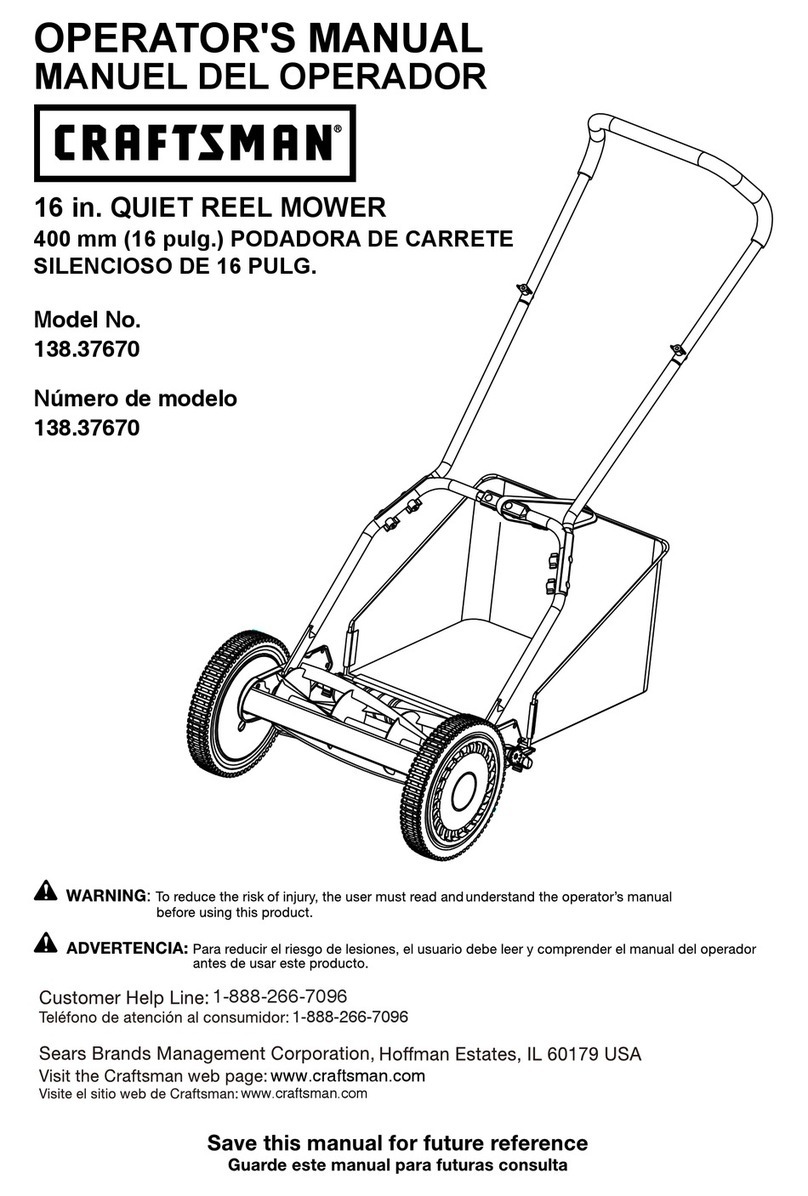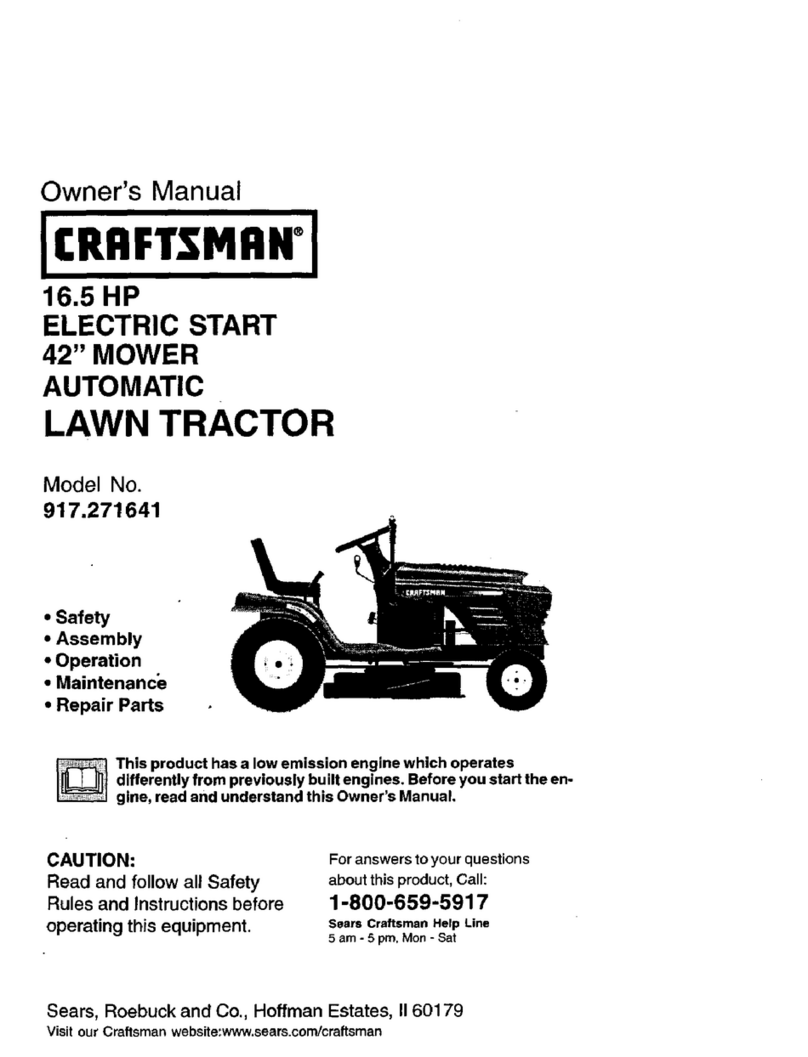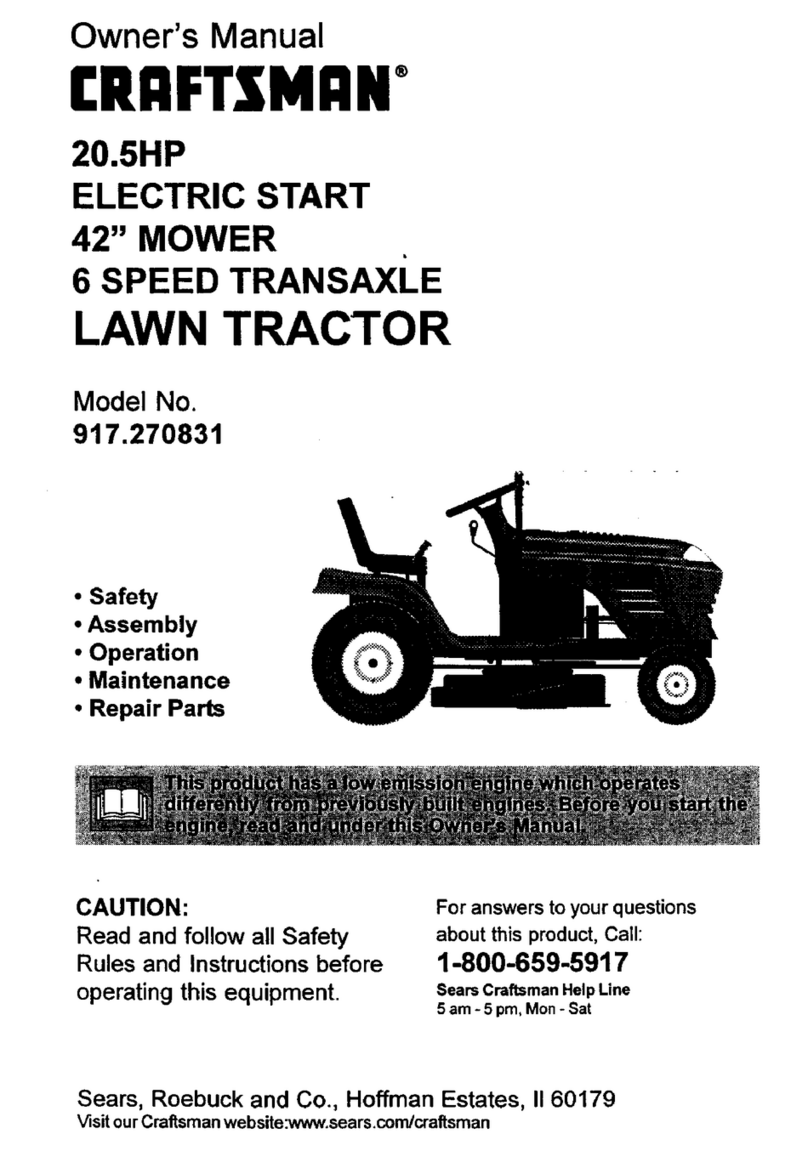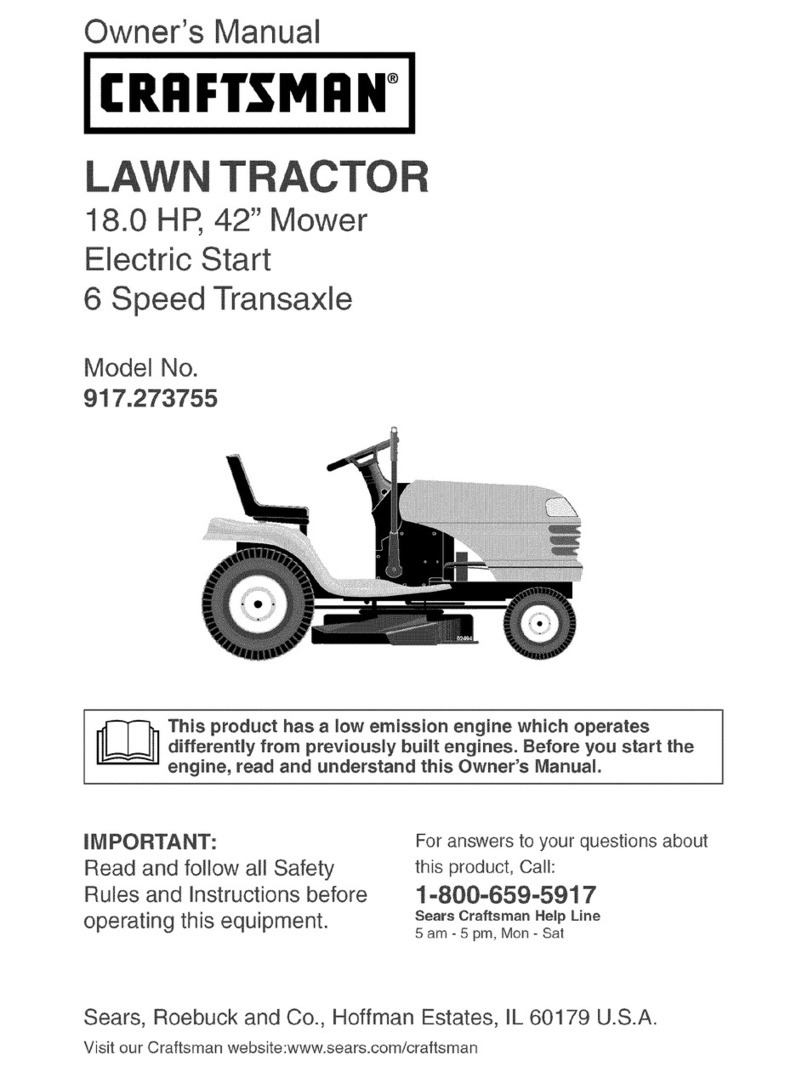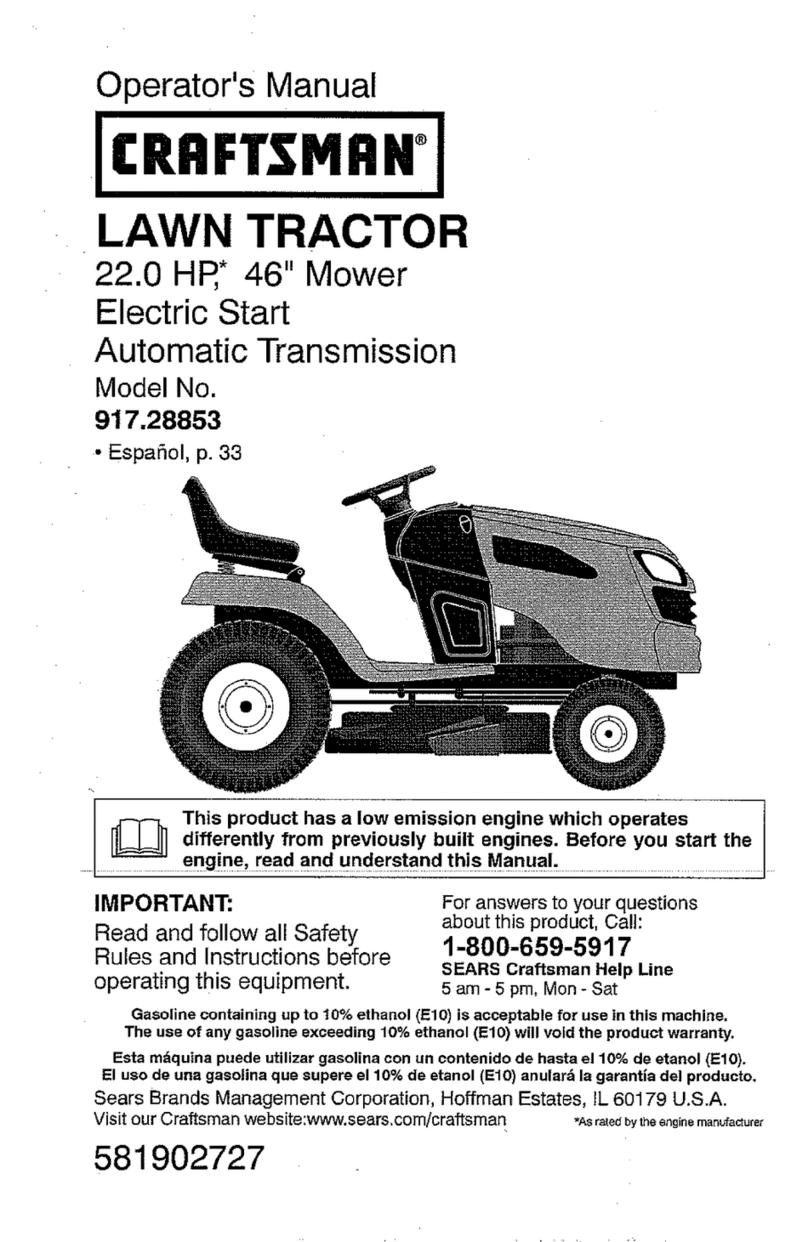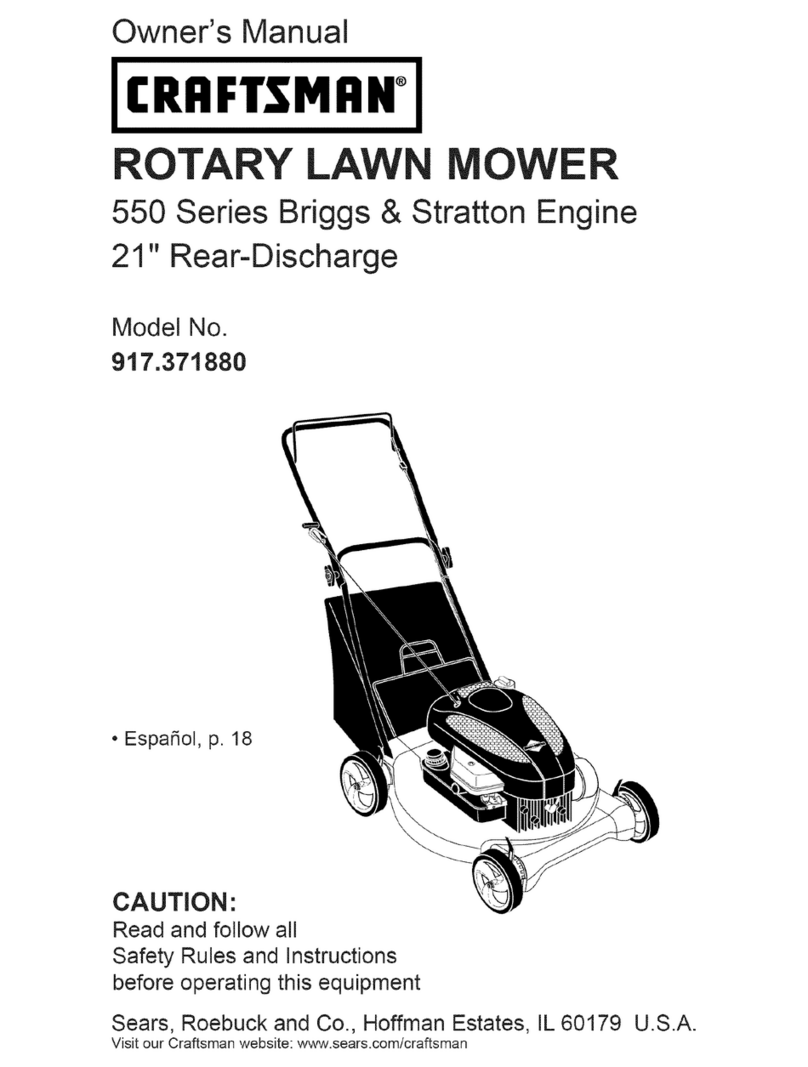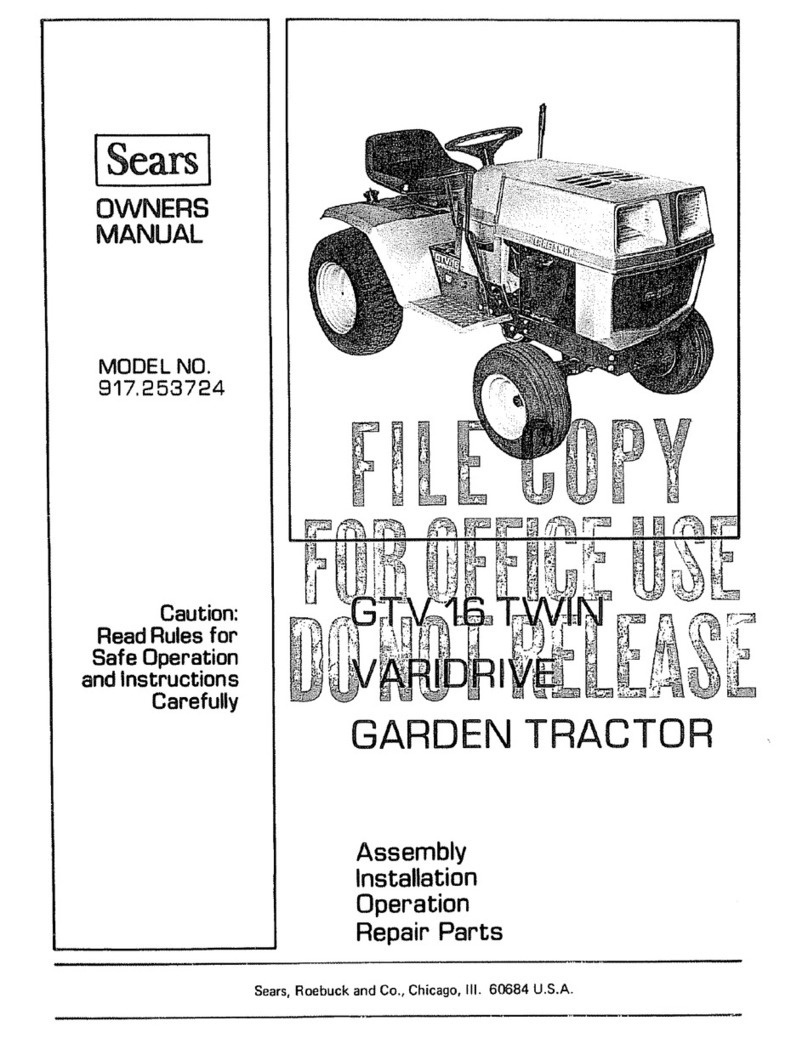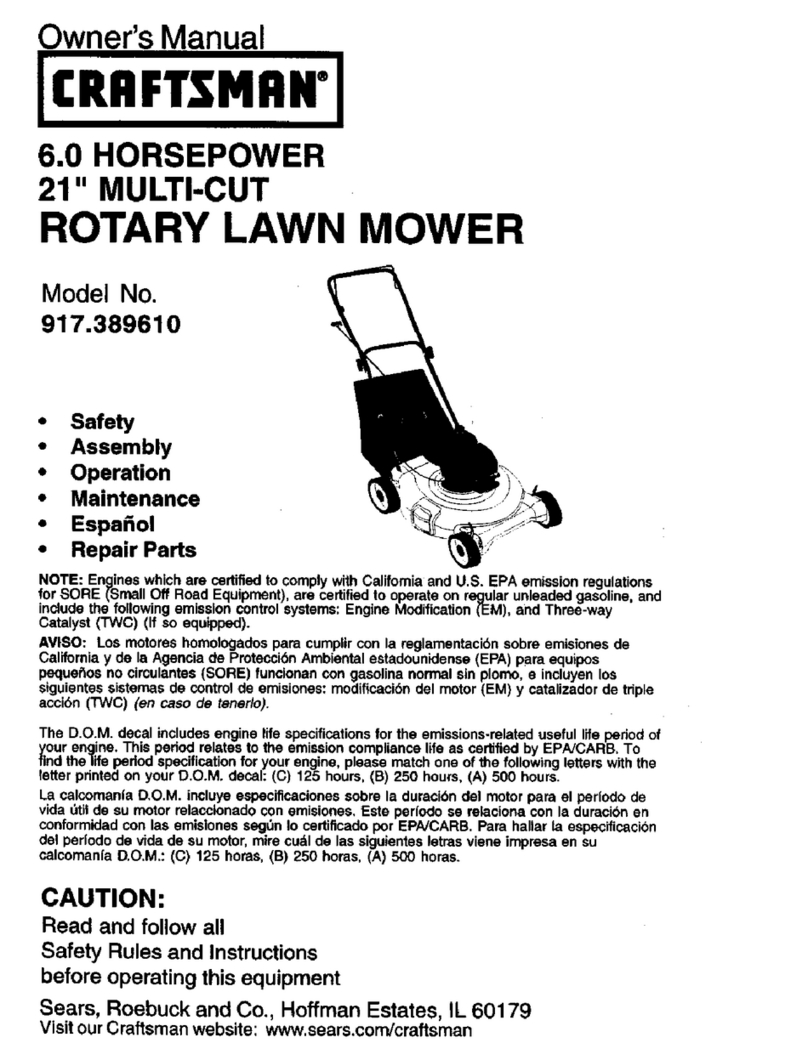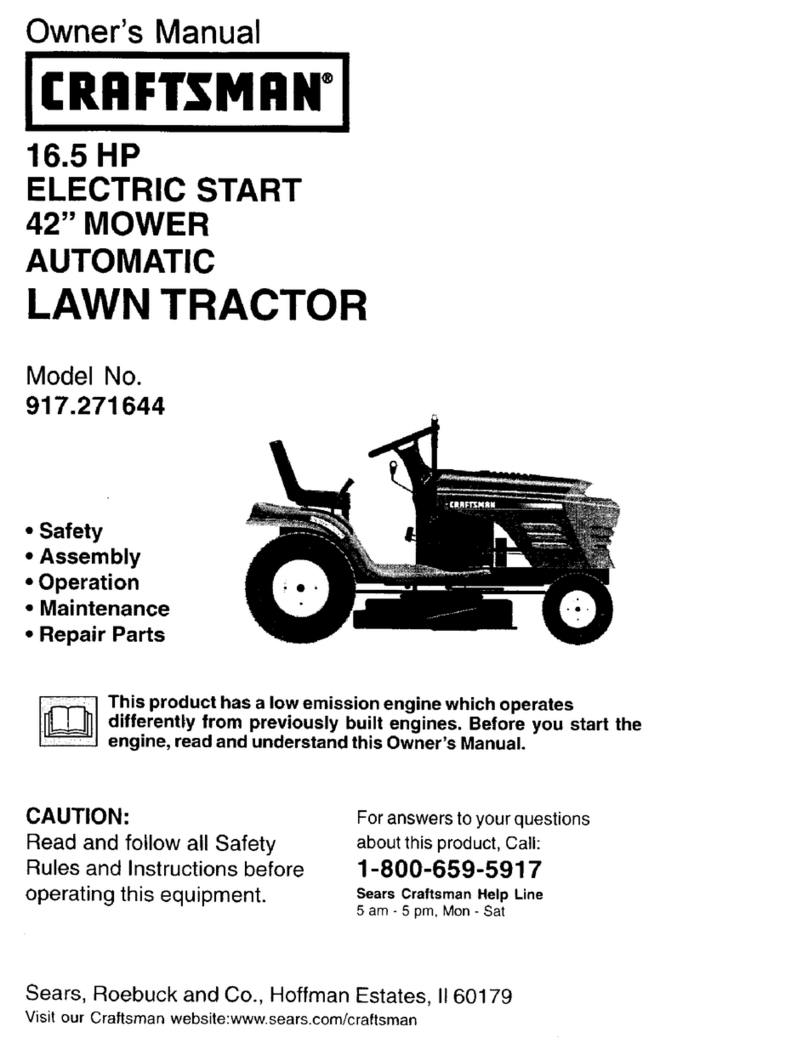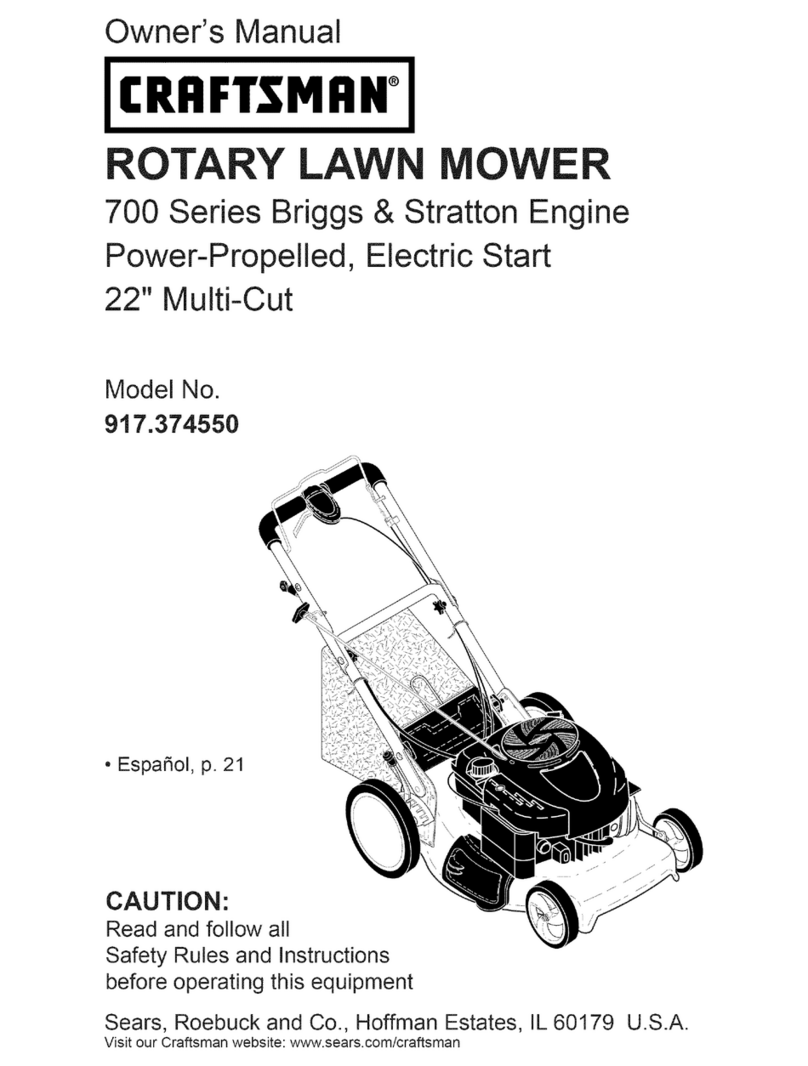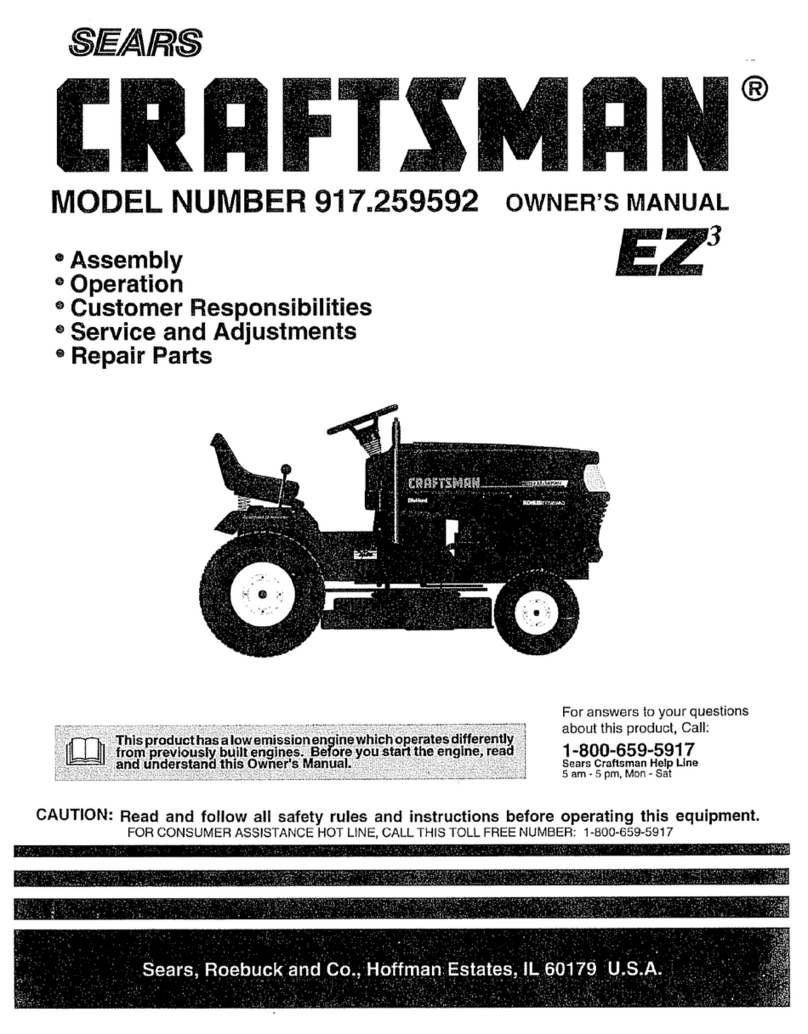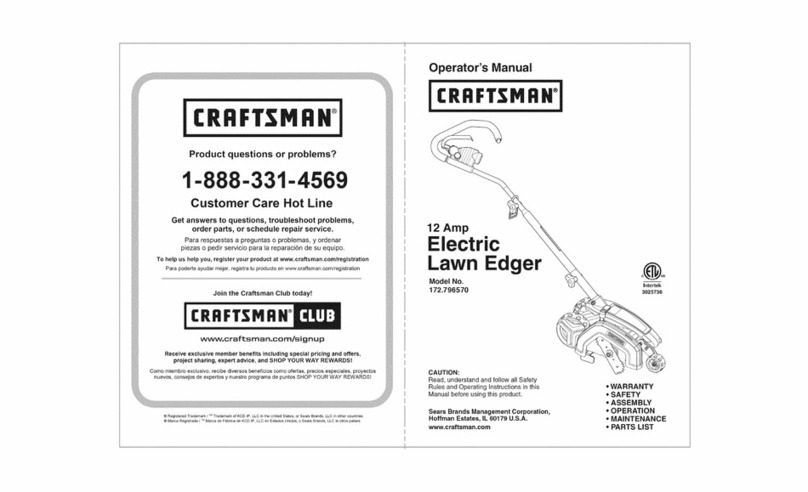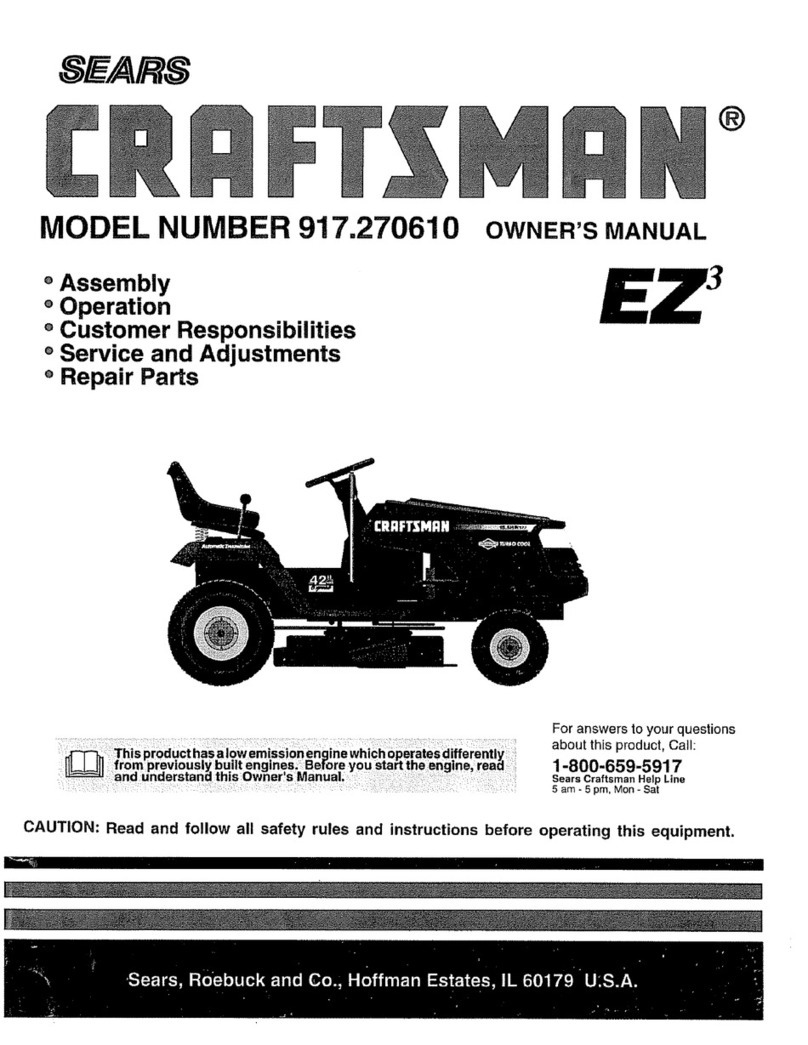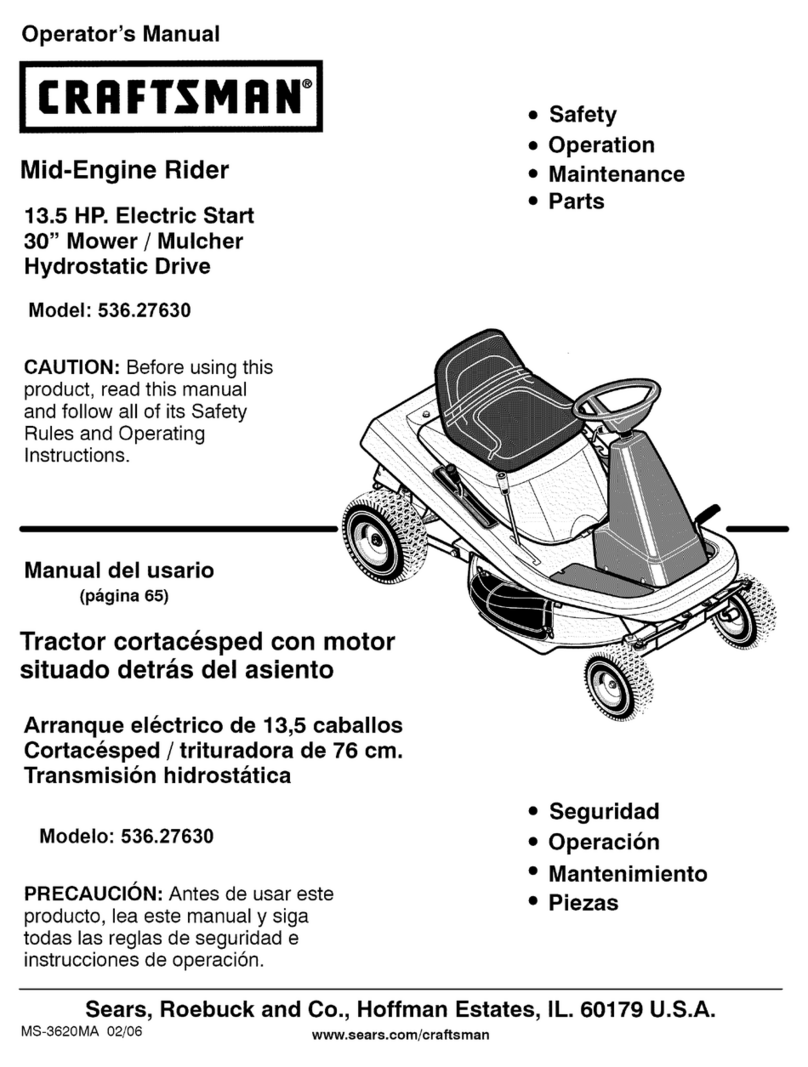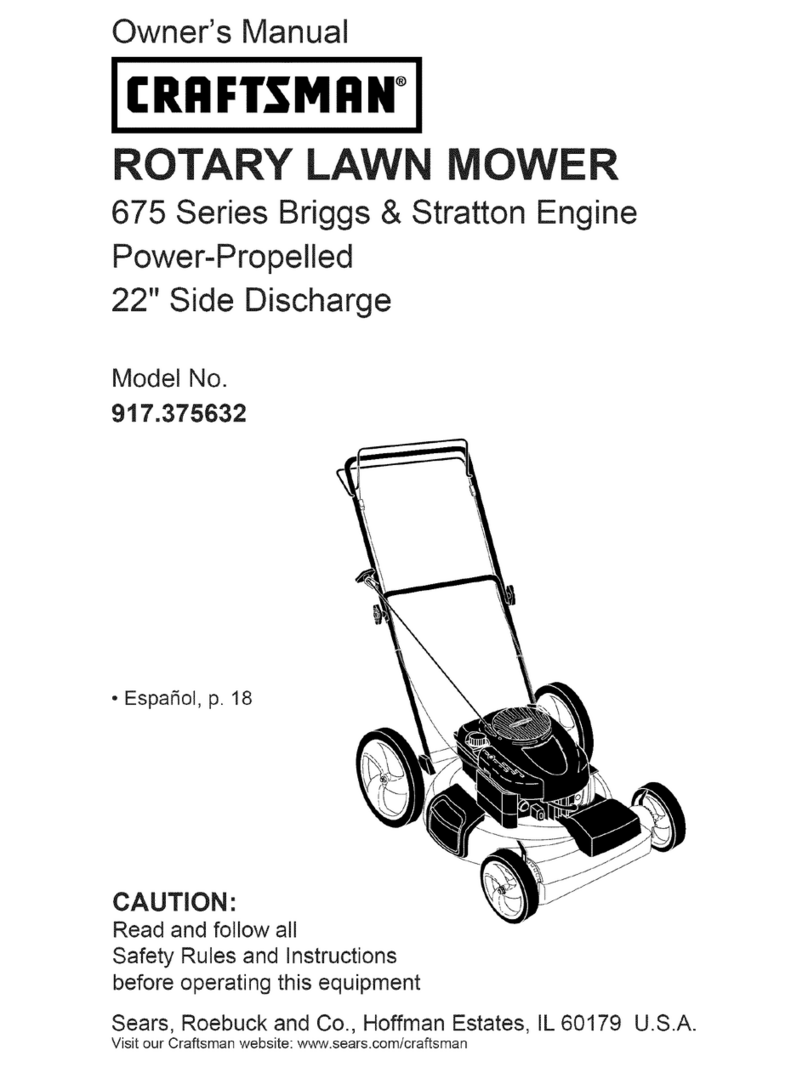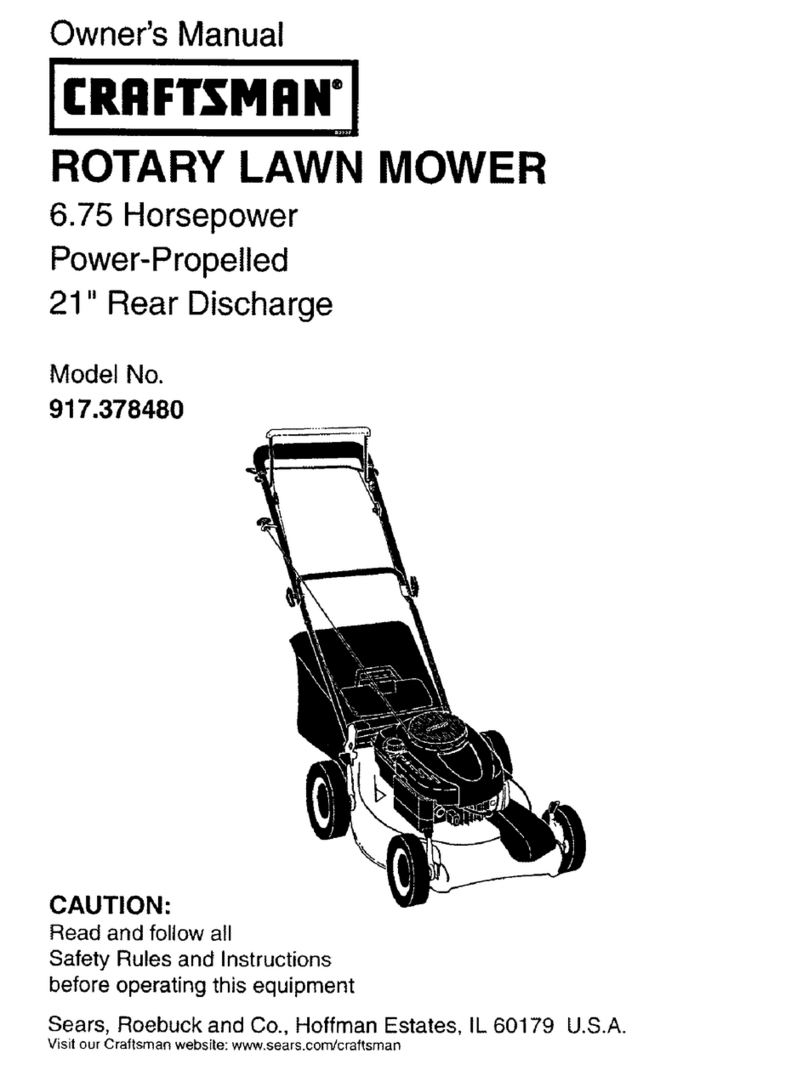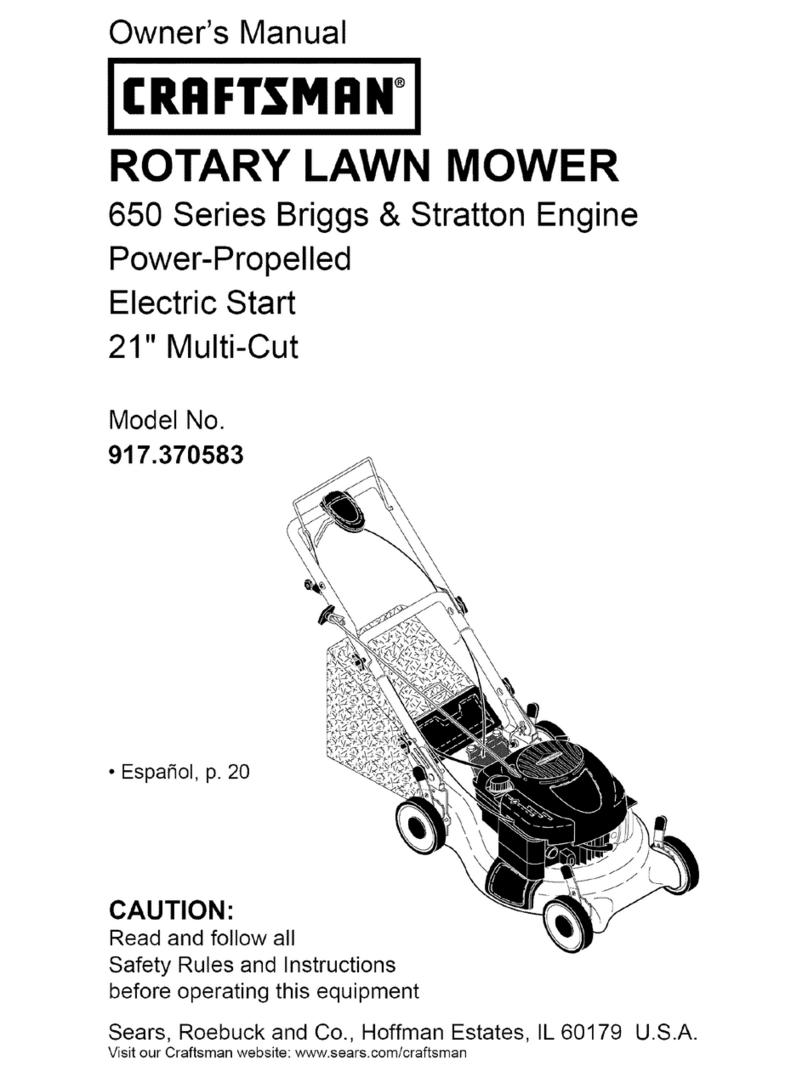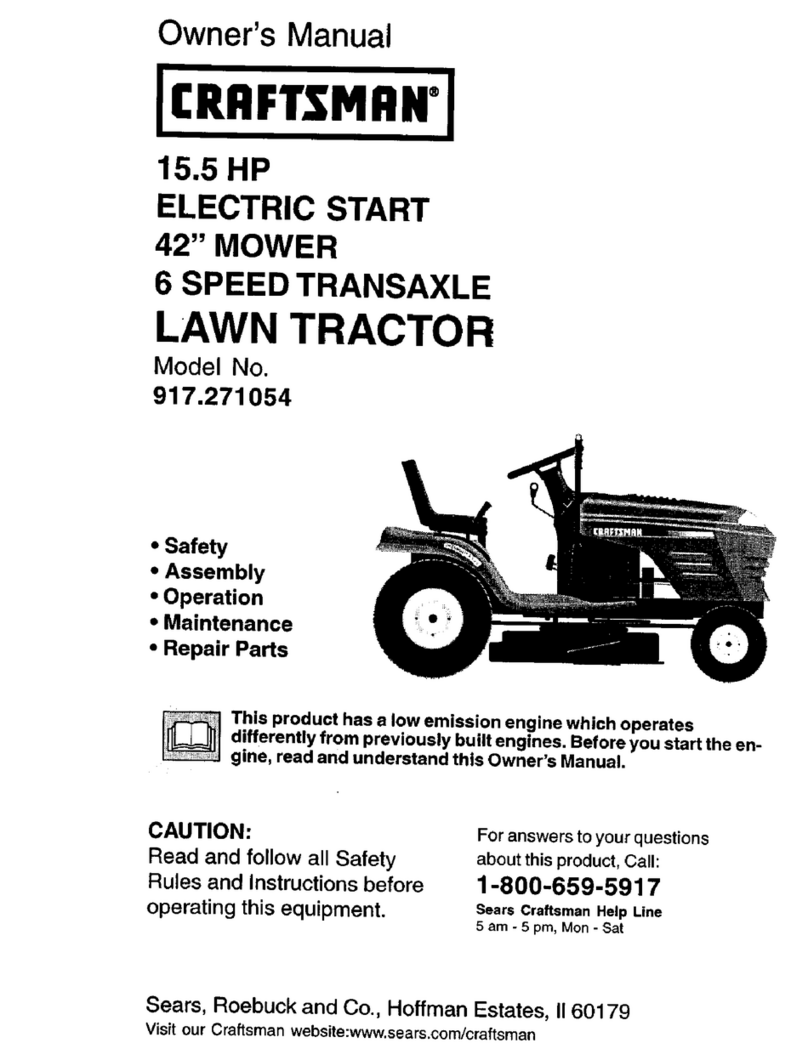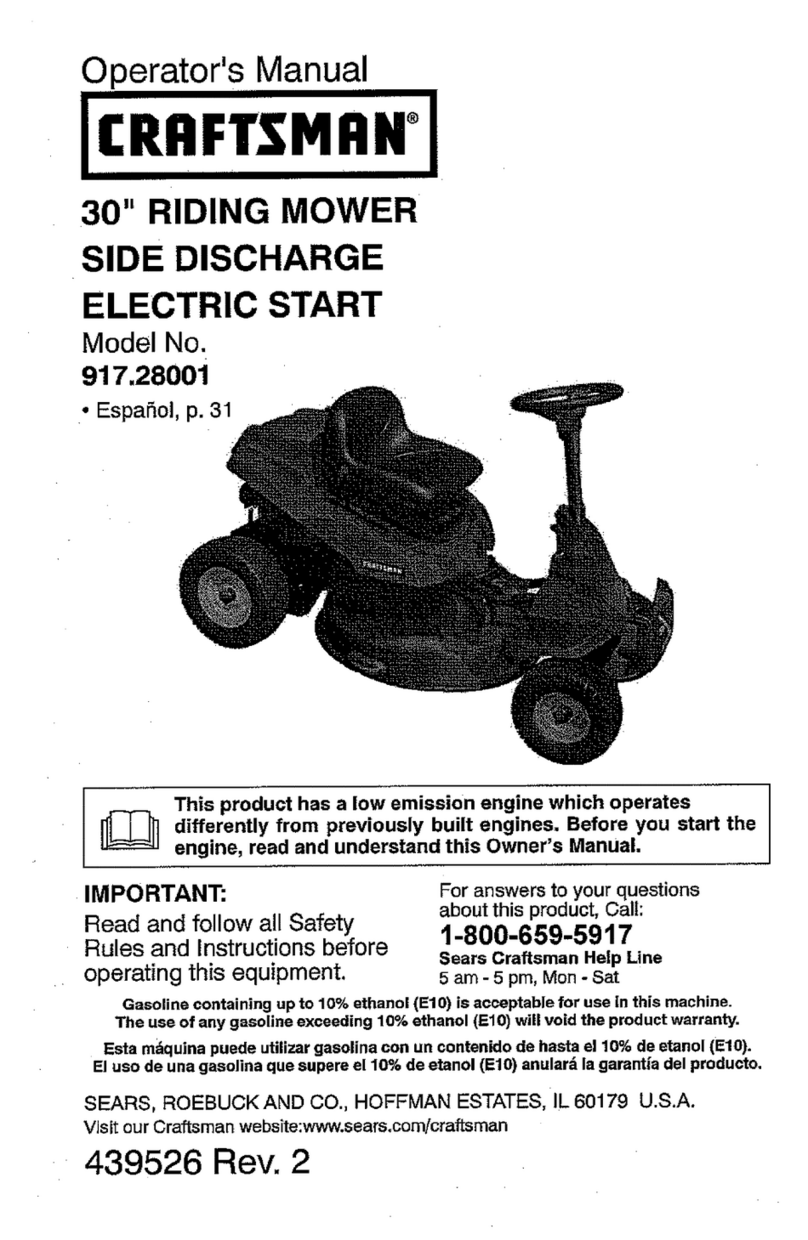
•Never leave a running machine unat-
tended. Always turn off blades, set
parking brake, stop engine, and remove
keys before dismounting.
•Disengage blades when not mowing.
Shut off engine and wait for all parts to
come to a complete stop before cleaning
the machine, removing the grass catcher,
or unclogging the discharge chute.
•Operate machine onlyin daylight or good
artificial light.
•Do not operate the machine while under
the influence of alcohol or drugs.
•Watch for traffic when operating near or
crossing roadways.
•Use extreme caution when loading or
unloading the machine into a trailer or
truck.
•AIways wear eye protection when operat-
ing machine.
•Use ear protectors to avoid damage to
hearing.
•Data indicates that operators, age 60
years and above, are involved in a large
percentage of riding mower-related inju-
ries. These operators should evaluate
their ability to operate the riding mower
safely enough to protect themselves and
others from serious injury.
•Followthemanufacturer'srecommenda-
tion for wheel weights or counterweights.
•Keep machine free of grass, leaves or
other debris build-up which can touch hot
exhaust /engine parts and burn. Do not
allow the mower deck to plow leaves or
other debris which can cause build-up
to occur. Clean any oil or fuel spillage
before operating or storing the machine.
Allow machine to cool before storage.
Iii. SLOPE OPERATION IV.
_L, WARNING! When loading or unloading .
this machine, do not exceed the maximum
recommended operation angle of 15 °.
Slopes are a major factor related to loss of
control and tip-over accidents, which can
result in severe injury or death. Operation
on all slopes requires extreme caution. If
you cannot back up the slope or if you feel
uneasy on it, do not mow it.
•Mow up and down slopes, not across.
•Watch for holes, ruts, bumps, rocks, or
other hidden objects. Uneven terrain
could overturn the machine. Tall grass
can hide obstacles.
•Choose a low ground speed so that you
will not have to stop or shift while on the
slope.
•Do not mow on wet grass. Tires may
lose traction. Always keep the machine
in gear when going down slopes.
•Do not shift to neutral and coast downhill.
•Avoid starting, stopping, or turning on a
slope. Ifthetires Iosetraction, disengage
the blades and proceed slowly straight
down the slope.
•Keep all movement on the slopes slow
and gradual. Do not make sudden
changes in speed or direction, which
could cause the machine to roll over.
•Use extreme caution while operating
machine with grass catchers or other
attachments; they can affect the stabil-
ity of the machine. Do no use on steep
slopes.
•Do not try to stabilize the machine by
putting your foot on the ground.
•Do not mow near drop-offs, ditches,
or embankments. The machine could
suddenly roll over if a wheel is over the
edge or if the edge caves in.
•If machine stops while going uphill,
disengage blades, shift into reverse and
back down slowly.
•Do not turn on slopes unless necessary,
and then, turn slowly and gradually
downhill, if possible.
TOWING
Tow only with a machine that has a hitch
designed for towing. Do not attach towed
equipment except at the hitch point.
•Followthemanufacturer'srecommenda-
tion for weight limits for towed equipment
and towing on slopes.
•Never allow children or others in or on
towed equipment.
•On slopes, theweight ofthetowed equip-
ment may cause loss of traction and loss
of control.
•Travel slowly and allow extra distance to
stop.
4
